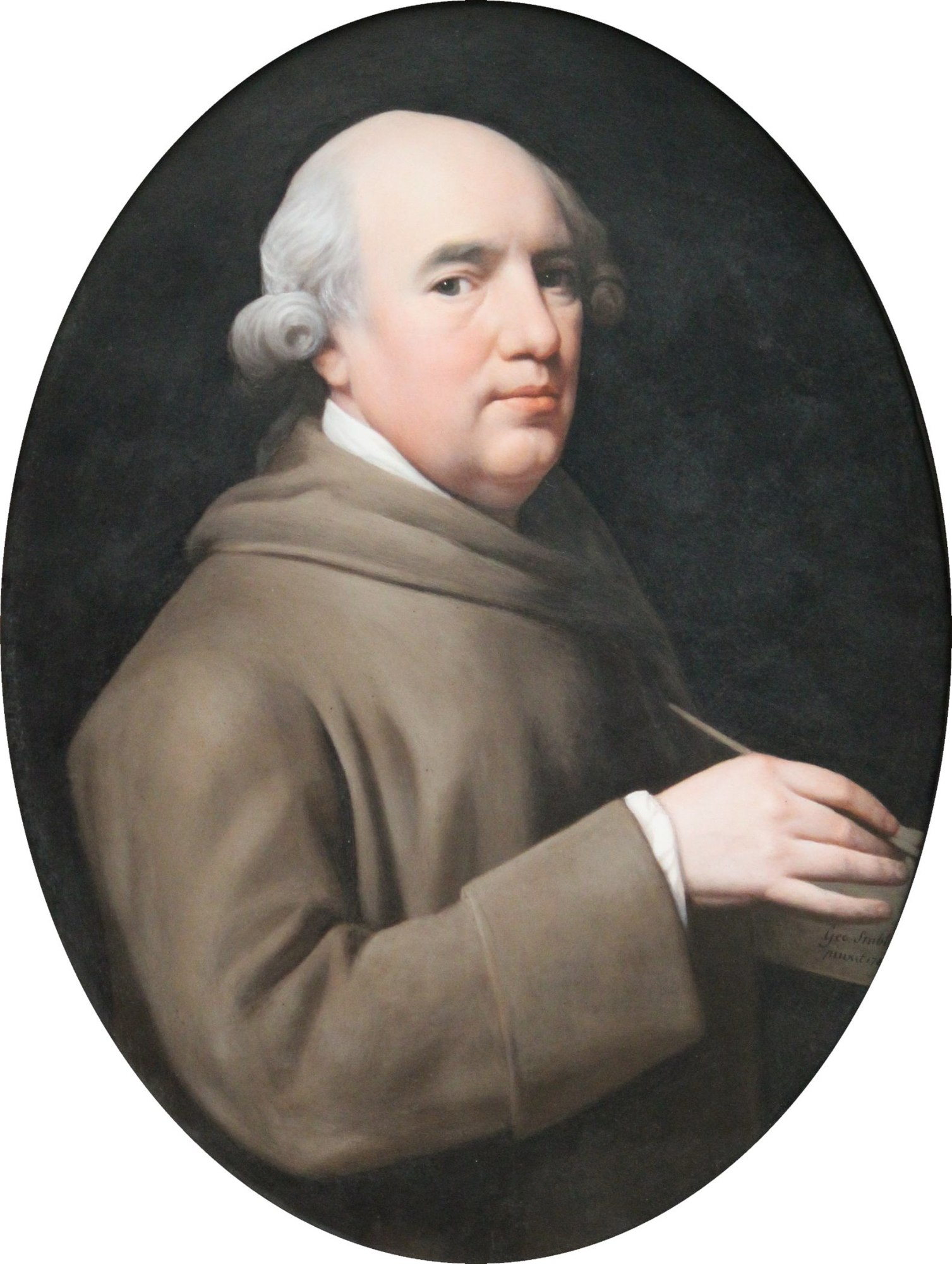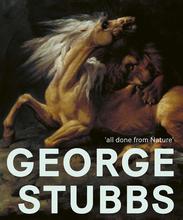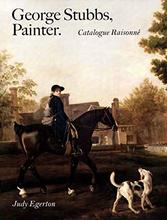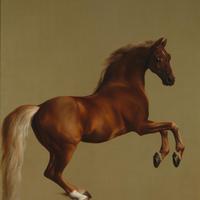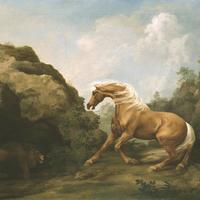More about George Stubbs
- All
- Info
- Shop
Works by George Stubbs

Contributor
George Stubbs was born in the middle of the Age of Enlightenment, which gave us a newfound appreciation for empirical evidence as well as 300+ years of suspect rationalizations for colonialism.
Stubbs caught the enlightenment fever pretty hard, he appears to have been consistently preoccupied by experimenting in enamel, printmaking, and cutting up horse carcasses. He began studying anatomy at the age of 8, drawing bones that his neighbor, a doctor, provided him. Honestly it seems kind of weird for an adult that’s supposed to be saving people’s lives to give the evidence of his failures to a child. Stubbs ended up getting along with dead animals better than people, so the bones left a lasting impression.
Stubbs worked with his dad as a leather-dresser, which appeared in a 2004 television series called The Worst Jobs in History, until he was fifteen and he begged his dad to let him pursue painting. His father eventually let the boy go, and died shortly thereafter. I don’t know what the autopsy said but I’d bet it was heart attack by child’s-following-of-dreams. One of my uncles died of that. Stubbs tried to study art as an apprentice but he and his instructor had a big fight over which pictures Stubbs was allowed to make copies of, and he left after just a few weeks.
He then went to study anatomy, first with a doctor, as one might expect. But he then holed himself up in a rented barn alone and spent a year and a half hanging horse carcasses from the rafters, dissecting them slowly, and illustrating each layer of tissue. It seems that “a great many horses were required” for such study and if PETA had been around they would not have been about it. But Stubbs published a book of his drawings, “Anatomy of the Horse,” to much enthusiasm from the literate, horse-riding class. He could depict dead horses so convincingly that the nobility began hiring him to paint their living horses. It was these paintings that Stubbs is most remembered for.
Like many people who become well-known for doing one, very specific, perhaps obsessive thing, Stubbs had a hard time getting along with people. He went to Italy as a young man to discern whether nature or art is better, and was noted in Roman circles for having strong opinions “which differed from those of everybody else.” He was accepted into the Royal Academy but refused to donate a painting to them as per academy rules, and so was subsequently removed. On one occasion he painted an 8’x14’ portrait of a horse named Hambletonian, who had just won a race for 3,000 guineas, had a disagreement with the knight who commissioned the painting, and had to take the patron to court to get his payment. I strongly believe in paying artists, but Stubbs probably did something to get Sir Henry so upset. It seems to be a theme with him.
Despite the marked decline in the cultural importance of race horses (essentially limited to Godfather I and Seabiscuit references) Stubbs is enjoying something of a renaissance. In 2011 his painting called Gimcrack on Newmarket Heath, with a Trainer, a Stable-lad, and a Jockey sold for $29 million at auction. His work Pumpkin was the first painting purchased by the Yale Center for British Art. And one of his paintings was deaccessioned and auctioned off in March of 2017 because the museum mistook it for a copy of itself. Not totally sure how that happens (drunk on the job?) but a little bit of Enlightenment Era empirical reasoning might have saved the embarrassment, and Stubbs himself would have been happy to help. Well, he probably wouldn’t have been that happy to help, but he definitely would have been able to tell it was real.
Sources
- Brown, Mark. March 14, 2017. “‘Copy’ of painting by George Stubbs revealed as genuine article.” The Guardian. Accessed September 6, 2017. https://www.theguardian.com/artanddesign/2017/mar/14/george-stubbs-pain…
- Egerton, Judy. George Stubbs, Painter: Catalogue Raisonné. New Haven: Yale University Press, 2007. Accessed Sept 7, 2017. https://books.google.com/books?id=mFrO5o2X2EcC&pg=PA12#v=onepage&q&f=fa…
- Meier, Allison. September 28, 2016. “A Ranking George Stubbs’s Greatest Racehorses.” Hyperallergic. Accessed September 6, 2017. https://hyperallergic.com/323463/a-ranking-of-george-stubbss-greatest-r…
- Monkhouse, William Cosmo. “Stubbs, George (1724-1806).” Edited by Leslie Stephen. Dictionary of National Biography, 1885-1900. London: Smith, Elder, & Co., 1885. Accessed September 6, 2017. https://en.wikisource.org/wiki/Stubbs,_George_(1724-1806)_(DNB00)
- The Paul Mellon Centre for Studies in British Art. “Paul Mellon, Founder.” Yale Center for British Art. Accessed September 6, 2017. http://britishart.yale.edu/about-us/paul-mellon-founder
- Santoleri, Carol. July 16, 2015. “Elegant and Exact: George Stubbs’s Anatomy of the Horse.” Now at The Met. Accessed September 6, 2017. http://www.metmuseum.org/blogs/now-at-the-met/2015/anatomy-of-the-horse
Featured Content
Here is what Wikipedia says about George Stubbs
George Stubbs ARA (25 August 1724 – 10 July 1806) was an English painter, best known for his paintings of horses. Self-trained, Stubbs learnt his skills independently from other great artists of the 18th century such as Reynolds and Gainsborough. Stubbs' output includes history paintings, but his greatest skill was in painting animals (such as horses, dogs and lions) , perhaps influenced by his love and study of anatomy. His series of paintings on the theme of a lion attacking a horse are early and significant examples of the Romantic movement that emerged in the late 18th century. He enjoyed royal patronage. His painting Whistlejacket hangs in the National Gallery, London.
Check out the full Wikipedia article about George Stubbs

